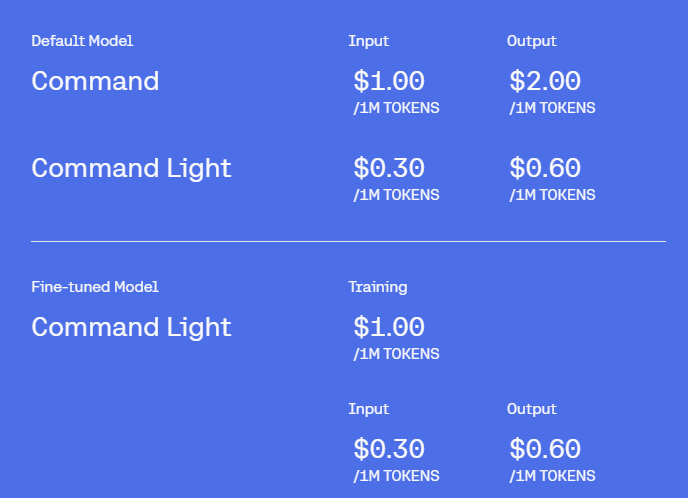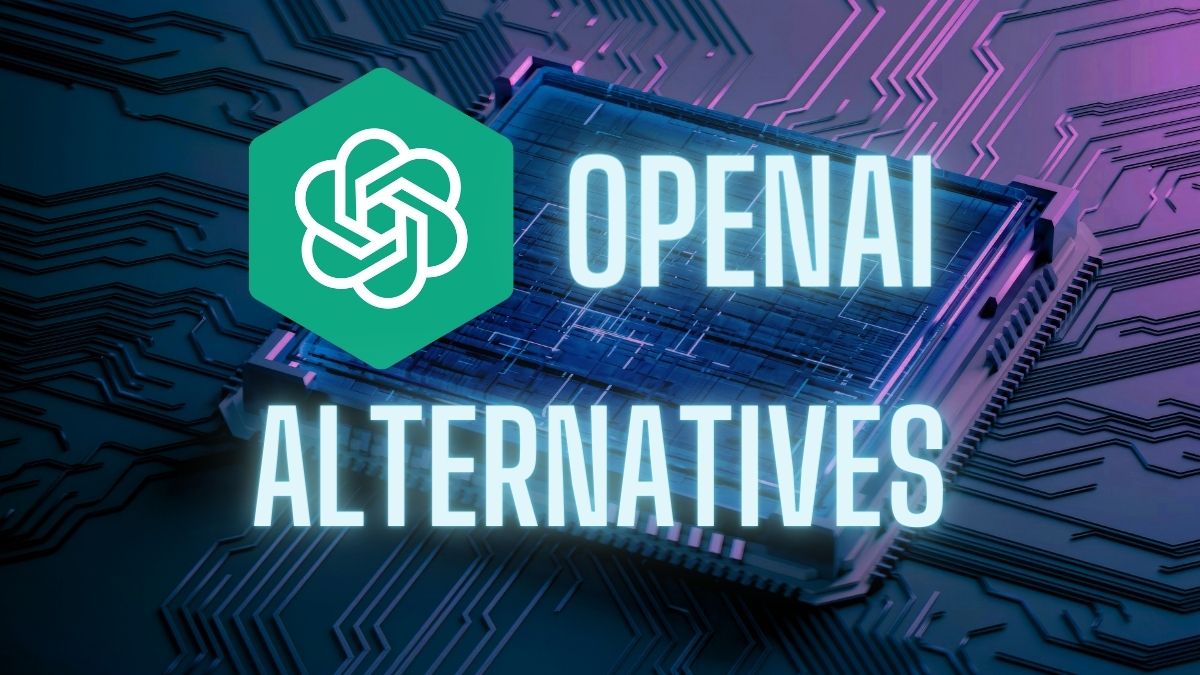OpenAI’s language models, such as GPT-3 and GPT-4, have amazed people and greatly advanced AI technology. People generally use OpenAI for text generation using ChatGPT, and image generation from DALL-E and use their API to build custom AI tools and apps. If you are searching for OpenAI alternatives then you might have faced some limitations, and higher pricing issues or you might be looking for more advanced options. In this article, we have covered all your concerns.
Here is what you will get here:
- OpenAI Alternatives For Large Language Model (LLM) With API
- OpenAI Alternatives For Cloud-Based AI Development
- OpenAI Alternatives For Image Generation.
Contents
OpenAI Alternatives For Large Language Model (LLM) With API
Top alternatives to OpenAI’s LLMs for powerful text generation, code generation, translation & more:
AI21 Labs
It is offered by an Israeli startup that developed a GPT-3 rival called Jurassic, focusing on changing how we read and write through AI. AI21 Labs emphasizes data quality in training its models to ensure accurate and source-cited responses.
Features:
- Jurassic-1 Jumbo: A massive LLM is known for its creative text formats, factual language generation, and ability to follow instructions.
- Task-specific models: Access specialized LLMs for tasks like summarization, paraphrasing, text improvement, and grammatical error correction.
- Easy-to-use API: RESTful API with clear documentation and examples for seamless integration.
- Fine-tuning options: Customize models for specific tasks and domains through fine-tuning with your own data.
- Multiple languages: Supports various languages, including English, French, Spanish, German, and more.
Pricing
| Plan | Subscription Fee | Features Included |
| Free Trial | Free (3 months) | Access to all features included in the Starter Plan |
| Starter Plan | $29/month | Foundation model APIs & SDK, Custom model training, Task-specific models, Unlimited seats |
| Custom Plan | Custom | Everything in Starter Plan |
Google Gemini
While not strictly open-source like Cohere and Hugging Face, Google’s Gemini API stands out as a powerful OpenAI alternative with unique capabilities. It is known to generate creative text formats, trained on a massive dataset for factual language processing.
Features:
- Combines text and imagery (or even video) for richer understanding and tasks.
- Options to choose from are Gemini Nano for on-device use, Gemini Pro for most tasks, and Gemini Ultra for complex, large-scale projects (coming soon).
- Perform tasks like text generation, translation, question answering, code completion, and more.
- Gain insights into the model’s reasoning for improved transparency.
- Fine-tune models with your data for specialized needs.
- Leverage Google Cloud’s infrastructure and security for robust deployments.
Pricing
You can access the web version of Google Gemini from the Google Bard and it is publicly available for free. You can its api for free as well the pricing table is given below:
| Tier | Rate Limits | Price (Input) | Price (Output) |
| Free | 60 QPM | Free | Free |
| Pay-as-you-go(Coming Soon) | Starts at 60 QPM | $0.00025 / 1K characters<br>$0.0025 / image | $0.0005 / 1K characters |
As of now it can be said that it is the free alternative of OpenAI.
Cohere
Cohere’s API excels in business-oriented tasks like summarization, sentiment analysis, and Q&A. Their explainability features are valuable for responsible AI practices.
Features:
- Multilingual Embeddings: Analyze and understand text in over 100 languages.
- Command Generation: Issue instructions and get text generated to follow them.
- Question Answering: Ask complex questions and receive concise and informative answers.
- Text Summarization: Generate summaries of lengthy documents or articles.
- Sentiment Analysis: Understand the emotional tone and sentiment expressed in text data.
- Explainability: Gain insights into the model’s decision-making process for responsible AI usage.
- Open-Source
- API and SDK Integration.
Pricing
Its pricing includes a Free Plan for learning and prototyping and a Production Plan for business applications with features like custom model training and elevated support. The pricing table is given in the image given below:

Hugging Face
Hugging Face is a dynamic platform in the AI domain, focusing on making complex NLP and LLM technologies accessible. It offers a vast library of pre-trained models for various tasks like text generation and translation, with tools for model fine-tuning and deployment. Hugging Face’s API enables easy integration of these models into applications, supporting a wide range of NLP tasks. This makes it a great choice for people looking for alternatives to OpenAI.
Features:
- Over 100k pre-trained models for various tasks, including text generation, translation, and question answering.
- Open-Source Platform
- Models trained in multiple languages
- Train models to your specific needs and data for improved performance.
- Various tools for deployment, version control, and collaboration.
Bonus Tip: Use popular models like BLOOM for multilingual translation or GPT-J for text generation.
Pricing
| Service Category | Features | Starting Price |
| General Access | – Access to 150,000+ ML models – Rate-limited API usage | Free |
| Subscription | – Early feature access – PRO badge – Dataset Viewer for private datasets | $9/month |
| Corporate Solutions | – SSO/SAML – Audit logs- Granular access control – Priority support | $20/user/month |
Anthropic Claude
The Anthropic Claude API offers access to a large language model (LLM) with a focus on safety and alignment with human values. This sets it apart from many other LLMs, which often struggle with biases and harmful outputs.
Features:
- Safety-first design: Trained on carefully curated datasets and filtered to mitigate biases and harmful outputs.
- Factual language focus: Prioritizes factual accuracy and avoids generating misleading or untrue content.
- Human alignment: Aims to understand and respond to prompts in a way that aligns with human values and goals.
- API access: Integrates seamlessly with applications through a well-documented and easy-to-use API.
- Multiple models: Offers various versions of Claude with different capabilities and performance levels.
Pricing
You can access the Claude web version from their website. However, the Claude API by Anthropic is currently in closed beta. If you’re interested in gaining access to the API, you can express your interest through their website.
| Model Family | Best For | Context Window | Prompt Pricing | Completion Pricing |
| Claude Instant | Low latency, high throughput use cases | 100,000 tokens | $0.80 per million tokens | $2.40 per million tokens |
| Claude 2.0 | Superior performance on complex reasoning tasks | 100,000 tokens | $8.00 per million tokens | $24.00 per million tokens |
| Claude 2.1 | Complex tasks with reduced hallucination rates | 200,000 tokens | $8.00 per million tokens | $24.00 per million tokens |
OpenAI Alternatives For Cloud-Based AI Development
Google Cloud AI
Google Cloud AI is a strong choice besides OpenAI, offering a range of tools and services for AI projects. While it’s not all open-source, its variety and ease of use make it a great option to consider.
Features:
- This unified platform streamlines machine learning development, integrating tools for training, managing, and deploying models.
- Access high-performing models for various tasks like translation, text generation, and image recognition, some open-source through TensorFlow Hub.
- Train your models with flexible options on Google’s scalable infrastructure.
- Gain insights into model decisions for greater transparency and responsible AI practices.
- Leverage Google’s robust security infrastructure to protect your data and models.
- Seamlessly integrate AI into your existing cloud workflows.
Amazon Sagemaker
Amazon Sagemaker is a comprehensive service by Amazon that enables developers to build, train, and deploy machine learning models, featuring a wide range of algorithms and integration with AWS services.
Features:
- Choose from a diverse library of pre-built algorithms, including popular choices like XGBoost and Deep Learning frameworks like TensorFlow and PyTorch.
- Train your custom models using your unique data and settings.
- Leverage pre-configured Jupyter notebooks for experimentation and analysis.
- Securely store and manage your trained models for easy deployment and version control.
- Create and manage ML pipelines that automate data preparation, training, and deployment.
- Scalable Infrastructure
- Integrated Security
Microsoft Azure AI
It provides a collection of AI services and machine learning tools on the cloud, including pre-trained models and APIs, designed for easy integration with Azure services.
Features:
- Pre-trained Cognitive Services: Utilize pre-built AI models for various tasks like text & speech analysis, translation, and computer vision, available through APIs and SDKs.
- Custom Model Training
- No-code Tools: User-friendly tools like Azure Bot Service and QnA Maker to build chatbots and knowledge bases without coding skills.
- Responsible AI Features: Utilize explainability tools and responsible AI frameworks to ensure ethical and transparent AI development.
- Integrated Cloud Infrastructure: Seamlessly scale your AI needs with Microsoft’s secure and reliable cloud infrastructure.
- Open-source Compatibility: Use open-source tools and frameworks through Azure Data Science VM and Azure Kubernetes Service.
- Pre-built solutions for healthcare, finance, and other industries, accelerate your AI journey.
So it can be a good alternative to OpenAI, offering a diverse ecosystem of tools, no-code options, and responsible AI features, all backed by robust cloud infrastructure.
IBM Watson AI
IBM Watson is a sophisticated AI system known for its ability to understand natural language and provide answers. Initially famous for its Jeopardy! win, Watson’s technology is now applied in various fields like healthcare and customer service.
Features:
- Pre-built Solutions: Access industry-specific solutions for healthcare, finance, and more, accelerating your AI journey.
- Utilize various APIs for tasks like text analysis, sentiment analysis, question answering, and document processing.
- Watson Assistant: Build advanced chatbots with natural language understanding and dialogue capabilities.
- Discovery: Gain insights from unstructured data with advanced information retrieval and analysis tools.
- Explainability Tools: Understand the reasoning behind AI outputs for responsible and transparent decision-making.
- Industry Expertise: Use IBM’s deep understanding of various industries to tailor AI solutions to your specific needs.
- Hybrid Cloud Deployment: Deploy Watson on-premises, in the cloud, or in a hybrid environment for flexibility.
OpenAI Alternatives for AI Image Generation
Midjourney
Midjourney is an AI-powered image generation platform that turns textual descriptions, known as prompts, into unique and creative images. Launched in July 2022, it’s quickly gained popularity among artists, designers, and anyone with a curious mind.
Feature:
- Realistic and Artistic: Creates very detailed and creative images, going beyond real-life looks into artistic styles.
- Explore Styles: Try many art styles, from old paintings to modern designs, to find your unique vision.
- Refine Creations: Use options to tweak and adjust your images until they’re just right.
- Community Ideas: Join a lively group of users to share work, get advice, and join fun challenges.
- Discord Use: Mainly uses Discord for chatting and making images, mixing community fun with creativity.
NightCafe Creator
NightCafe Creator is a popular platform that combines user-friendly interfaces with powerful AI to generate unique images based on text descriptions. It caters to both casual users and developers seeking programmatic access through its open API.
Features:
- Intuitive Interface: Drag, drop, and customize your prompts with styles, effects, and artistic filters for a personalized touch.
- Diverse Styles & Effects: Explore a vast library of artistic styles, from classic paintings to futuristic landscapes, and experiment with various effects to refine your creations.
- Community-Driven: Share your creations, discover works from other artists, and participate in challenges to spark inspiration.
- Collaboration & Remixing: Collaborate with others on creations or remix existing artworks to build upon shared ideas.
WOMBO
WOMBO offers a unique approach to AI-powered image generation, primarily through its mobile app with an open API for programmatic access.
Features:
- Mobile-First Experience: Generate images directly on your smartphone or tablet with a user-friendly interface.
- Diverse Styles & Effects: Explore a variety of artistic styles and experiment with effects to personalize your creations.
- Community-Driven: Discover artworks from other users, participate in challenges, and engage with the creative community.
- Social Sharing: Share your creations directly on social media platforms or within the WOMBO community.
- Batch Processing: Generate multiple images based on different prompts or variations, ideal for creative exploration.
- Open API: Programmatically generate images through the API, integrate with other tools, or automate creative workflows.
Stability Diffusion
Stability Diffusion is an open-source text-to-image diffusion model gaining significant traction for its impressive image-generation capabilities. While primarily used through unofficial interfaces, its API offers programmatic access for developers and advanced users.
Features:
- Open-Source
- High-Quality Image Generation: Produces visually appealing and diverse images, often comparable to commercial solutions.
- Highly Customizable: Provides extensive control over the generation process through text prompts, styles, and noise settings.
- Inpainting & Outpainting: Allows editing existing images by filling in missing parts or expanding them creatively.
- Fine-Tuning: Train the model on specific datasets to tailor its outputs to your needs (advanced feature.
- Direct Integration: Developers can incorporate Stability Diffusion directly into their projects through its well-documented Python API.
Frequently Asked Question
What can you use instead of the OpenAI API Key?
You can use the API keys of other AI platforms such as Google Gemini, AI21, Anthropic Claude, Cohere, and others given in this article.
Is there a free alternative to OpenAI API
Yes, there are many free alternatives to OpenAI API such as Google Gemini, AI21, and Hugging Face. These platforms offer free API access with some restrictions.
Can I use OpenAI Playground for free?
Yes, you can use OpenAI Playground for free, but with limitations. You’ll have access to some models for text generation, but not all, and usage is capped. For more features and higher usage, you’ll need a paid subscription.
Is there a free alternative to ChatGPT-4?
While not an exact equivalent to GPT-4, Google Gemini Pro presents a promising free option with strong generative AI capabilities.

Hey there! I’m Kuldeep Kumar, and tech is my jam. From the mind-blowing world of AI to the thrilling battlegrounds of cybersecurity, I love exploring every corner of this amazing world. Gadgets? I geek out over them. Hidden software tricks? Bring ’em on! I explain it all in clear, bite-sized chunks, laced with a touch of humor to keep things sparky. So, join me on this tech adventure, and let’s demystify the wonders of technology, one blog post at a time.

